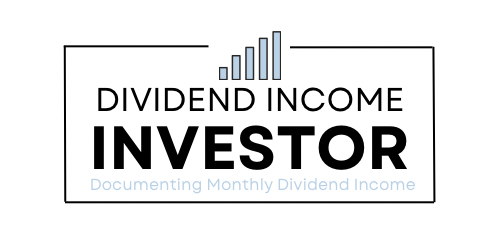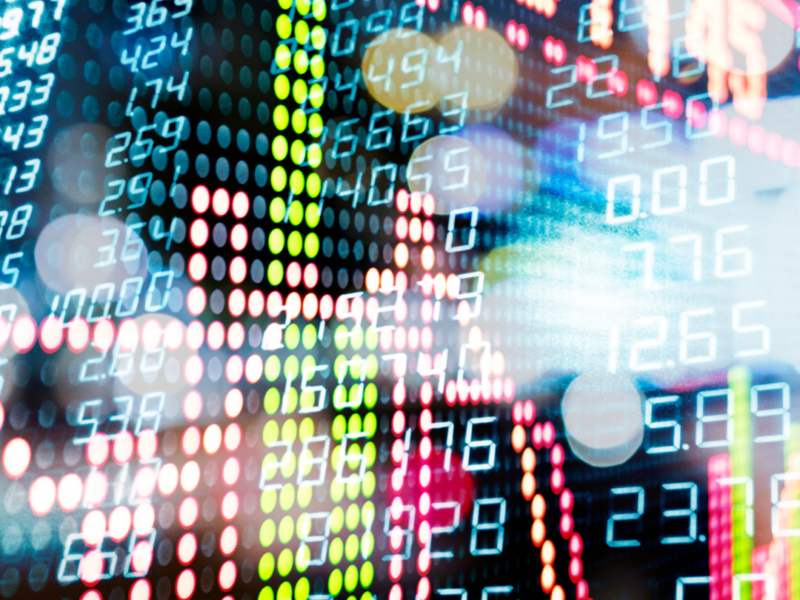How do dividend stocks pay investors? Describing what a dividend is and showing you exactly how and where dividend investors receive dividends. I am not a licensed investment advisor and this article is not investment advice. This post may contain affiliate links.
I’m sure you’ve heard dividend investors talk about passive income before.
But have you ever stopped to consider what it actually means?
Do dividend investors receive dividends through direct deposit into their bank account just like employees?
Almost. But it’s not quite the same.
In this post, I will show you exactly how and where dividend investors receive dividends.
Let’s dive in.
How Do Dividend Stocks Pay Investors?

What Is A Dividend?
Regular readers of this blog are already familiar with what a dividend is, because I publish monthly dividend income updates.
But if this is your first time stopping by, it is my pleasure to enlighten you on dividends.
In short, a dividend is a payment from a company to its shareholders.
Dividends represent a portion of a company’s profit that it pays out to shareholders.
In my view, dividends are the best source of passive income that exists.
Once you own a dividend-paying stock, you are paid to hold the stock.
How Do Dividend Stocks Pay Investors?
So how do dividend stocks pay investors?
Typically, dividends are paid into an investor’s brokerage account.
However, if the stock or brokerage account offers DRIP (dividend reinvestment plan), the dividends can be automatically reinvested in additional shares.
If an investor chooses not to set up a DRIP, they can either choose to reinvest the dividends or withdraw them.
Related: Reinvest Stock Dividends — 4 Ways To Reinvest Dividends
Where Do Investors Receive Dividend Payments?
As I alluded to above, dividends are paid directly into an investor’s brokerage account.
To find out how much dividends you received, you can view the transaction history section of your brokerage account.
In some cases, your brokerage account may notify you that you received a dividend. Wealthsimple is a brokerage in Canada that notifies its account holders.
But most of the time, investors must know the ex dividend date and payment date of the stocks to know when dividends are received.
Once the dividends are credited to an investor’s brokerage account, they are free to spend them. You can withdraw, reinvest, let them build up, or do whatever you want with them. It’s your money at that point.
Why Do Companies Pay Dividends?
Dividends represent a portion of a company’s profit that it pays out to shareholders.
A company will pay dividends to shareholders as an incentive to invest in the company and to add a level of stability to the stock price.
From a business perspective, a company will pay dividends to shareholders when it is consistently generating enough cash.
As a company becomes larger, it becomes more challenging to reinvest their profits in a way that will generate significant returns for shareholders. As such, they will choose to buy back stock or pay out dividends to shareholders.
What Are The Benefits Of Dividends?
There are many benefits to owning stocks that pay dividends.
For example, dividends provide a source of passive income for investors. Over the past decade or more, interest rates have been historically low. As such, income investors are paid next to nothing right now for keeping their money in high interest savings accounts, GICs, and bonds. Meanwhile, cash-flow generating businesses that pay dividends have continued to pay shareholders through the ups and downs of the market.
Otherwise, dividend stocks are historically more stable than growth stocks. If you look at what has happened to growth stocks since the beginning of 2022 compared to dividend stocks, it’s easy to understand why dividend investors sleep well at night. Shopify (SHOP) lost more than 50% of its value while Fortis (FTS) barely even moved. It just kept paying its dividend.
Of course, growth stocks offer more significant upside in terms of capital appreciation. But quality dividend stocks offer capital appreciation and dividend income while you wait.
How Much Can You Make From Dividends
At this point, you are probably wondering how much you can make from dividend investing.
I mean, who doesn’t want to receive passive income just for holding a stock?
To put it bluntly, it comes down to how much money you can invest.
In a previous post, I discussed how much I need to invest to live off dividends.
In my case, I determined I need to invest around $400,000 in dividend stocks to comfortably cover my living expenses.
Based on a dividend yield of 4.78%, I could generate nearly $20,000 in dividend income by investing $400,000 in dividend stocks.
Related: How Much Do I Need To Invest To Live Off Dividends?
Dividend Calculation
To know what percentage of its earnings a company is paying out to shareholders, you need to know the dividend payout ratio.
To get and idea of how much dividend income you will receive from a stock, you will need to know the dividend yield.
The dividend yield measures how much dividend income an investor will receive.
To determine the dividend yield, divide the annual dividend payment per share by the price of the stock.
In order to know how much dividend income you will receive from a particular stock, you can multiply the annual dividend per share by the number of shares you own.

How Do Dividend Stocks Pay Investors?
In summary, a dividend represents a portion of a company’s profits. The company will pay a portion of its profits to shareholders.
Shareholders receive dividends directly to their brokerage account in the cash side, or they are reinvested back into more shares of the company.
Once an investor receives a dividend, they are free to do whatever they want with it.
Personally, I reinvest all dividend income back into additional shares. I plan on reinvesting my dividends to grow my monthly dividend income until I am financially independent.
Similar Articles On Dividend Investing
How Much Do I Need To Invest To Live Off Dividends?
How To Become A Dividend Investor
Reinvest Stock Dividends — 4 Ways To Reinvest Dividends
Dividend Payout Ratio — Dividend Investors Should Seek Healthy Ratios Over High Ratios
I am not a licensed investment or tax adviser. All opinions are my own. This post may contain advertisements by Monumetric. This post may also contain internal links, affiliate links to BizBudding, Amazon, Bluehost, and Questrade, links to trusted external sites, and links to RTC social media accounts.
Connect With RTC
Twitter: @Reversethecrush
Pinterest: @reversethecrushblog
Instagram: @reversethecrush_
Facebook: @reversethecrushblog
Email: graham@reversethecrush.com


 How To Save Money With Minimum Wage — 9 Legitimate Options
How To Save Money With Minimum Wage — 9 Legitimate Options
